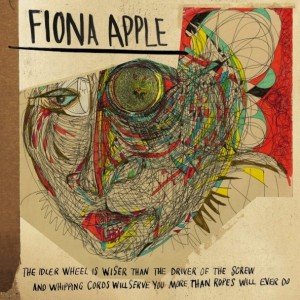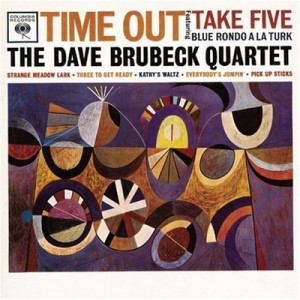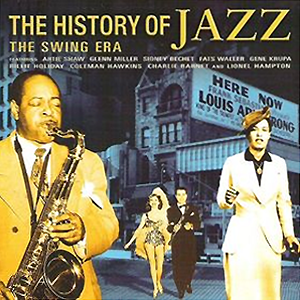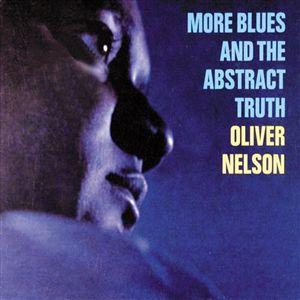These graphics have been creeping onto Facebook all week. Looks like Tom Waits has something in the pot. And that always means good things for the rest of us.
I’ll give you the scoop tomorrow, once I know.
These graphics have been creeping onto Facebook all week. Looks like Tom Waits has something in the pot. And that always means good things for the rest of us.
I’ll give you the scoop tomorrow, once I know.
 Fiona Apple has just released a new record for the art-minded. As is her bent, she’s given it a really long title… The Idler Wheel Is Wiser Than the Driver of the Screw and Whipping Cords Will Serve You More Than Ropes Will Ever Do. But if anything, it’s a short title compared to her second record.
Fiona Apple has just released a new record for the art-minded. As is her bent, she’s given it a really long title… The Idler Wheel Is Wiser Than the Driver of the Screw and Whipping Cords Will Serve You More Than Ropes Will Ever Do. But if anything, it’s a short title compared to her second record.
I’ll cut to the chase. The verdict on this new album? Fantastic! But definitely not for the faint of heart. It isn’t as direct as Tidal or When the Pawn… and seems to use a lot of found sounds and peculiar harmonies. Here are the highlights for me:
5/5 – “Every Single Night” the preview single from the record. A very quiet song, with a lot of compressed ideas and a somewhat rapid-fire delivery of lyrics. She contrasts the free-flowing lyrics with sparse, music box-like textures and found-sound percussion. So cool! I can’t wait to see this live!
5/5 – “Johnathan” a masterfully eerie, minor key thing with a vaguely Grusin piano part. Seems to be about her ex, Jonathan Ames. I don’t know enough about the backstory to say anything intelligent about this…but what a strange, awesome song!
On many of the songs, she’s singing with enough intensity to distort her normally very smooth, sultry voice. The grit and gravel she chews on songs like “Daredevil” and “Regret” really pay off. Those songs create some of the most satisfying, pained moments in the collection.
I strongly recommend this one for anyone who loved the sparse, dry qualities of James Blake’s self-titled album…this unfolds in a similar way. Also, Tom Waits fans my find a kindred spirit here. The quirk and instrumentation on display is of a similar aesthetic.
And to Fiona fans, prepare for her to push the boundaries…this isn’t the angst pop of old, but its well worth exploring. Fiona has proven herself no longer an angry 90s pop star, but an artist evolving. Time to let “Criminal” and “Sleep to Dream” lie. Those were great songs in their day, but she has moved on. And I’m cheering her on every step of the way.
Last bit…get it on iTunes. Normally, I’m a firm believer of CDs or vinyl, so its weird to be saying that, but this collection is a definite exception to the rule. The “mastered for iTunes” thing sounds great, the bonus track “Largo” is one of the better cuts, and the 5 included videos are from her wonderful SXSW performance. Additionally, the iTunes LP artwork and interactivity is very cool!
Dig!
Radiohead’s stage collapsed last night in Toronto, killing drum tech Scott Johnson. While I don’t know anyone involved, let me add my voice to the collective expression of sympathy for the family and friends of this person. I know I would’ve been honored to have the job he was doing and imagine it was a dream come true. I can only imagine the anguish of those left behind. May you all find peace.
But to the main point…want to see how pretentious pricks hijack a memorial thread? Read the comments at the bottom of this post…you’ll see it rapidly evolve into an attempt at valuation of life that I find sickening.
The debate is summed up simply…Radiohead’s impact on the world, in the eyes of one commenter, exceeds the worth of the drum tech who was killed in the stage collapse.
I disagree emphatically. Regardless of Radiohead’s accomplishments, a life was lost. Scott Johnson’s family will forever be changed as will the lives of everyone he would’ve interacted with. And the world has lost another voice, quiet or not.
Who are we to place worth on an individual?
So it seems a cross-section of Radiohead fans disgust me.
You are valuable. May you all recognize your worth.
There’s so much going on right now! I’m picking away at a new transcription, working on a film soundtrack, preparing for Summer at GCC and a new summer class at ASA (“School of Rock”), and trying to be a dad and husband. Life is good and super busy. Consider this a check-in.
Ian and I went to Comicon yesterday. That was a new experience for me. It was a blast! Too bad we were only able to attend for 3 hours. There was so much to see. And nothing completely prepared me for the costumes…so many people dressed so questionably. Here’s a photo of us with some of the more familiar characters…
It was made even more fun because we got to spend most of the time with Liz and Derek from ASA. Glad we got to run into each other outside of the ASA campus and just celebrate geekdom.
 On the music front, NPR hipped me to an off-the-radar EP by a mix of artists I happen to dig. Art-folk artist Sufjan Stevens, rapper Serengeti and the drone-engineer Son Lux with a guest spot by one of my Indie favorites Shara Worden (from My Brightest Diamond). Its excellent and I highly recommend it if you have eclectic tastes.
On the music front, NPR hipped me to an off-the-radar EP by a mix of artists I happen to dig. Art-folk artist Sufjan Stevens, rapper Serengeti and the drone-engineer Son Lux with a guest spot by one of my Indie favorites Shara Worden (from My Brightest Diamond). Its excellent and I highly recommend it if you have eclectic tastes.
It’s called Beak & Claw, by S / S / S.
Hope you dig on it!
 Here’s a very famous solo from Paul Desmond, being played with Dave Brubeck. I know this one is a cliche, and that there’s many purists who scoff at the idea of this tune, but I love Desmond and had this solo in my archives, so why not? Right?
Here’s a very famous solo from Paul Desmond, being played with Dave Brubeck. I know this one is a cliche, and that there’s many purists who scoff at the idea of this tune, but I love Desmond and had this solo in my archives, so why not? Right?
I actually picked this one years ago for the Arizona School for the Arts Showcase event (our MEGA, end-of-the-year concert). Our pit orchestra played this behind the Ballet. The arrangement we purchased left a lot to be desired so I rewrote it and added a Basie-esque harmonization of Desmond’s solo to give the sax players something interesting to do.
The solo is very short, and as this album really represented jazz’s first significant adventure into odd meter, it doesn’t stretch very far rhythmically. Much more interesting is Desmond’s use of articulation and sequence.
Let’s look at articulation first.
Desmond doesn’t follow the “traditional” bebop articulation pattern of tonguing primarily off beats and accented notes. Instead, he appears to ad-lib his articulations based on the shape of his line. Note the opening phrase of the head. He semi-ghosts the first two notes, accents the 3rd and possibly the fourth. The chromatic part of the lick has a slur from the downbeat to a dramatic staccato, and then all the remaining notes are tongued. This gives his line a dramatic and very unique percussiveness that, to my ear, transforms the lick. The tune loses much of its personality and life when the details Desmond added are missing. As with any solo, take time to match the recording for all the style elements that are tough to represent on paper.
I’ve seen this solo written out a few times in books…they tend to oversimplify some of the more surprising note choices by assuming he is simply playing in thirds on most of the pseudo-arpeggios. Note that most of the shapes are based on a C-6 (concert Eb-6) chord, and a strong emphasis of the note F (concert Ab). To my ear, the F implies an F7 and a mild suspension.
My favorite moment is the phrase from measure 49 to 56. Its a nice rising sequence and it really plays of the bright color of the major 6 of the Dorian scale.
Happy shedding!
 Its been awhile since my last transcription post, but that’s not to say I haven’t been busy…my most recent project has just been a beast. For those who follow Chris Potter, you may be aware that he offers lessons through his site. They come in pre-recorded bundles of interviews, exercises (not nearly enough of these…grrrr…) and tour-de-force performances of specific standards. The infamous “All the Things You Are” performance he gave has been floating around for years and a few decent transcriptions are out there as well. Potter recorded “Confirmation” for one of these lessons a few years back.
Its been awhile since my last transcription post, but that’s not to say I haven’t been busy…my most recent project has just been a beast. For those who follow Chris Potter, you may be aware that he offers lessons through his site. They come in pre-recorded bundles of interviews, exercises (not nearly enough of these…grrrr…) and tour-de-force performances of specific standards. The infamous “All the Things You Are” performance he gave has been floating around for years and a few decent transcriptions are out there as well. Potter recorded “Confirmation” for one of these lessons a few years back.
“Confirmation” was a tune I cut my teeth on. I used to warm up with the head and a few choruses of solo for years, even playing it on my NEC audition. But as familiar as I am with the tune, it still poses several challenges. Playing sensible melodies while still hinting the chords tends to lead me down the same cliches over and over. This solo-sax recording has presented a great opportunity to hear a master take the tune in a huge number of different directions.
From the interviews, Chris Potter describes the performance as starting “really down the middle Bebop”, playing clean lines perfectly in sync with the chords. Then he says he’ll “kind of work my way out”. In this case, “out” involves everything from intervallic ideas, absurdly extended hemiolas, planing in minor and major 3rds and even a few chorus of “26-2” changes thrown in for good measure.
Here’s the solo (revised 3/5/12): Chris Potter plays Confirmation (Bb)
A chorus-by-chorus summary could break down like this:
Well, there you go. A really detailed solo by Potter and hundreds of new ideas for approaching Bop changes from a modern master. Enjoy!
 Now I know this is a vanity post so feel free to ignore. With that in mind, here’s a few Top lists for 2011:
Now I know this is a vanity post so feel free to ignore. With that in mind, here’s a few Top lists for 2011:
…aka albums I didn’t get to or was just hipped to this last year…
Ok…your turn!
 Bob Brookmeyer hipped me to Lester Young. A few lessons into my studies with Bob, he pointed out that my improvised lines were chordal, jumpy and relatively undeveloped – another way of saying vertical and disconnected. He prescribed a steady diet of Lester Young as an antidote, serving up tracks like “Shoe Shine Boy,” “Taxi War Dance,” and “Lester Leaps In.” Within two weeks of the daily Lester sessions, I found a sweeter sound, a straighter 8th feel and less obsession with harmonic “tricks” over strong melodies. I found myself concentrating more on the larger harmonic areas of the tune and less chord to chord. Bob noticed the difference at the very next lesson. “You took my advice,” he said with a hint of a smile. Yes Bob, I did. And I haven’t stopped since.
Bob Brookmeyer hipped me to Lester Young. A few lessons into my studies with Bob, he pointed out that my improvised lines were chordal, jumpy and relatively undeveloped – another way of saying vertical and disconnected. He prescribed a steady diet of Lester Young as an antidote, serving up tracks like “Shoe Shine Boy,” “Taxi War Dance,” and “Lester Leaps In.” Within two weeks of the daily Lester sessions, I found a sweeter sound, a straighter 8th feel and less obsession with harmonic “tricks” over strong melodies. I found myself concentrating more on the larger harmonic areas of the tune and less chord to chord. Bob noticed the difference at the very next lesson. “You took my advice,” he said with a hint of a smile. Yes Bob, I did. And I haven’t stopped since.
“Lester Leaps In” is a Count Basie head arrangement over rhythm changes designed to feature Young over tons of blowing space. There are several versions floating around, featuring Pres (Billy Holiday’s nickname for Young) doing his thing at high speed – lots of bluesy lines, simple chromatic movements around the I-chord, and lots of lyrical ideas, delivered with immaculate groove and his sonorous tone.
This transcription is from 1939 with Count Basie’s band, The Kansas City Seven.
Lester’s style is nearly always “horizontal,” sounding the bigger key-areas of a tune rather than each chord. This was a big contrast to the other great tenor man of the time, Coleman Hawkins. Lester would take elaborate progressions like I vi ii V, which would lead to Hawk unleashing a flurry of notes, and instead see the whole thing as being in the key of I and simply play off the key center. That meant less cliches, more time to work, and a less busy style. Not having to worry about rapidly moving chords means time to emphasize subtle key center colors and the Blues.
Notice letter (B)? Its just an ornamented I chord, even though there’s a lot of chords in the same space. But what a hip, rhythmically swinging idea! And Basie’s comping shows this sensibility too. He’s barely playing anything back there, but the bass is really going at it.
This is not to say Pres didn’t have moments of harmonic surprise and detail. He is a jazz musician, right? But since his horizontal orientation to the chords doesn’t worry about each change, he reacts to the key centers instead of each change in sound. Check out this moment from the trading-4s section as an example:
Another great moment like this is the twisting line in chorus (B) measures 73 to 76.
Playing horizontally in a hip manner requires a lot of intuition and a great musical ear. You have to develop a sensitivity for key regions and be adept at melodic development, as harmony will be less of a crutch. Here’s a few suggestions to get you started:
Good luck and happy shedding!
First, let me say that I love Spotify for the most part. It’s a wonderful way to find new music, and having the huge library has been great for a music junkie like myself. And I’m a Facebook user as well so I don’t (for the most part) mind the integration Spotify has done with Facebook. But what I see is a problem and a bad paradigm for internet companies that’s starting to take shape.
Facebook is free.
I pay for a Premium Spotify account.
I feel awkward at best that the Spotify app in Facebook is requiring me to share what I’m listening to in the program.
On Facebook, I don’t share what I don’t want to share, but accept that there will be occasional things I have to go “fix” or delete due to some hole I didn’t realize I was falling into when I signed up for a service that shamelessly admits that people are its real product. Thats the side effect of using a free service that makes its money by selling us to advertisers.
On Spotify, I’ve chosen to pay for the service. The mobile app makes it worth my time and money…not the social features. If you’re making too little profit, charge more. If I feel its worth it, I’ll subscribe. If not, I’ll leave. Its not personal…just business.
And that should be ok.
What I’m not doing, is paying you to share my information. I’ll do that myself when I want. I will control what I share. Simple. If you prevent that, I will leave. Simple.
And for the users with the free service? Well…they’re getting something for free. I think tradeoffs are to be expected.
Facebook has made a fortune selling us. And for the most part, we’re complicit. Maybe a lot of users are naive about privacy, but I think most of us are just looking at information differently these days. I bet if people were as up in arms about internet privacy as we like to claim (while turning blue and blowing smoke out of our ears), we’d all burn Mark Zuckerburg at the stake. Instead, I dutifully log onto Facebook daily…voting with every click.
Maybe I’m a sucker. More likely, I’m just realistic about the tradeoffs involved.
The trend in question is that companies, in their efforts to be relevant and massively rich on the internet, are viewing us through this same lens. We are apparently the commodity now. And yet some offer services that are wonderful without social aspects. Integrating those sorts of things can be very fun when desired, but are secondary (or even more removed) from the point of the whole experience.
I don’t buy a TV for the discussions about it I might get into when company comes over. I could care less what my friends think about it. Does it look good when I play my shows?
You want word-of-mouth advertising for your product? Make sure I like it and I’m happy to oblige. Forcing people to share for you just robs the user of any authenticity they might have had. Suddenly, a freely offered bit of praise becomes one more nagging ad in all the other noise out there.
So Spotify, make sure you think carefully about what your company is recognized for selling. For now, my shameless evangelizing of your product to friends, colleagues and the 300+ students I interact with every semester has to stop. I’m just not sure what I’m telling people about anymore. Is this a music service, or Facebook’s new social music experiment? Until I know, my voice will be much more subdued.
Good luck Spotify. Hopefully this doesn’t fall on deaf ears.
 It’s my birthday today, but you get the present! Here’s a Phil Woods transcription from Oliver Nelson’s More Blues and the Abstract Truth.
It’s my birthday today, but you get the present! Here’s a Phil Woods transcription from Oliver Nelson’s More Blues and the Abstract Truth.
Phil Woods is possibly the greatest living bebop saxophonist, and the definitive disciple of Charlie Parker in my book. He has the licks no doubt, but what really matters is that his sense of phrasing is so elastic and deeply informed by the blues.
Many players, in an effort to embed bebop into their psyche, run countless patterns and drills ultimately sounding like a band-in-the-box solo. They’re missing that Bird was so loose and more than a little abstract in his sounding of the changes. It wasn’t merely about “insert lick A into slot B”…there was a natural flowing of ideas that floated over the chords.
Phil Woods found a way to emulate this aspect of Bird above all else. Woods has the sheer virtuosity and the gigantic bebop vocabulary, but its the phrasing and playfulness that give Woods the reckless abandon admired by those lucky ones who saw Bird at the height of his powers.
Today’s solo transcription paints a broader picture of Woods’ skill and musicianship. Here, we have him playing the blues…and not just any blues, but a slow 12/8 groover with lots of space and time to play around the edges. The changes are about as typical a blues you can find. The classic Blues form opens the door wide for Woods to break out the gutbucket growls, 40s R&B licks and smeary bends giving his performance that classic sense of soul drenched in the blues of Kansas City. You won’t find many of the dazzling bebop lines Woods is more famous for (though he sneaks in a few), but you’ll find tons of fresh-but-familar blues licks, delivered with fire and passion.
The third chorus (C) is the part that led me to grab the solo. It begins with a hip, textbook use of sounding 3rds and 7ths. You could give it to students as a demonstration that those intervals alone are all it takes to sound a chord, as its driving and soulful, but at the same time, simple and developed. If that wasn’t enough, it all comes together in bar 43 (the D7 in the 7th bar) as he develops the 2-note intervallic idea by expanding it to a major 7th, hitting all the money notes on each change. I mean, dig that Bb to A on E-7, followed by the C# to C on the A7, and then grinding out that deliciously modern sounding #9 in the 11th bar! Its nonstop ear-candy…you know…the kind with the creamy filling.
Measure 54 in chorus (D) is the other highlight for me. Its a classic theory trick used all the way back in Louis Armstrong’s day…instead of playing the IV chord for bars 5 and 6, play the IV for bar 5 and then play a IV-7 in bar 6. It gives you an extra chromatic guide tone that sounds very slick. Here, Woods pushes that idea about as far as it can go by sounding a double-time run over what looks like a G-7 C7b9 progression. It gives you a really juicy new pathway back to D7.
There’s lots of other gems in here, but you can discover those for yourself. Just make sure to line it up with Woods’ original performance so you can catch the nuances that are impossible to put on paper…and there are a ton in a performance like this.